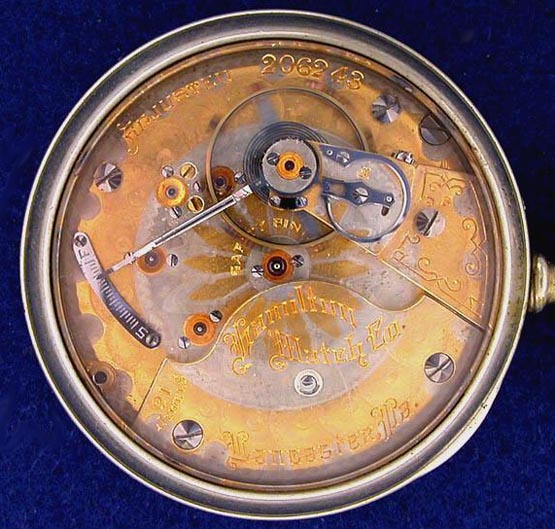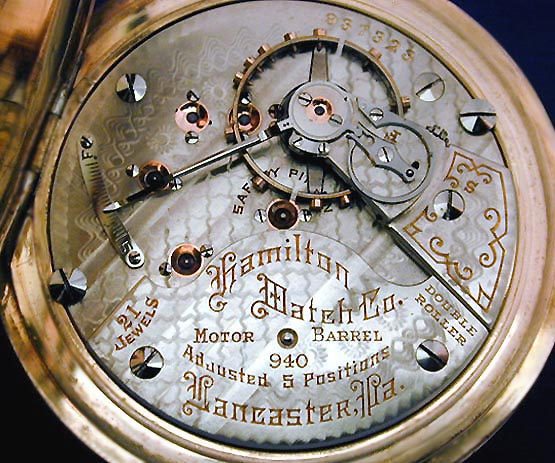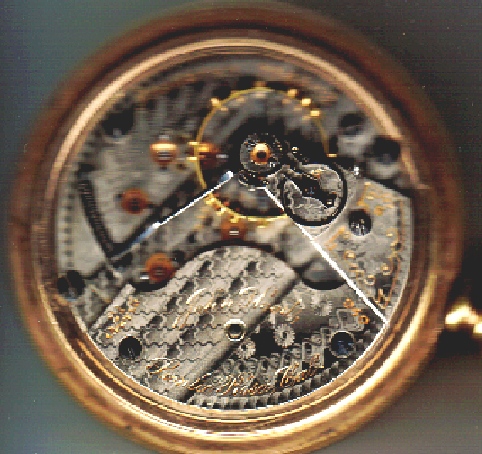
| WWT Shows | CLICK TO: Join and Support Internet Horology Club 185™ | IHC185™ Forums |

|
• Check Out Our... • • TWO Book Offer! • |
Welcome Aboard IHC185™  Internet Horology Club 185
Internet Horology Club 185  IHC185™ Discussion Site Main Page
IHC185™ Discussion Site Main Page  Horological Discussions, Questions and Answers
Horological Discussions, Questions and Answers  Pocket Watch Discussions
Pocket Watch Discussions  Hamilton two-tone 940
Hamilton two-tone 940
 Internet Horology Club 185
Internet Horology Club 185  IHC185™ Discussion Site Main Page
IHC185™ Discussion Site Main Page  Horological Discussions, Questions and Answers
Horological Discussions, Questions and Answers  Pocket Watch Discussions
Pocket Watch Discussions  Hamilton two-tone 940
Hamilton two-tone 940Go  | New Topic  | Find-Or-Search  | Notify  | Tools  | Reply to Post  |  |
| IHC Member 500 Wristwatch Expert |
As a Hamilton wristwatch specialist I don't have many pocket watches, but I admire them deeply and I love the few I own. I wonder if anyone can enlighten me further about two-tone 940 movements like this one. I find only fleeting references in standard books and the few collectors I've talked with have little to say. This one dates to 1902. Are there any references indicating exactly how long they were made, at what price, and for what market? It's an extraordinary movement, pretty amazing when you consider that it was hidden inside a case where only the watchmaker would really appreciate it!  | ||
|
| IHC President Life Member |
René, many of us have wondered and speculated about this. Hopefully we will explore several points of view in this topic and get some answers. From the late 1800s through the first decade of the Twentieth Century the American companies really came of age. My thinking is the various manufacturers were in a behind the scenes competition to show what they were capable of doing. The "show-off" watches like your beautiful Let's begin by showing everyone the contrast between your much earlier two-tone and the standard damaskeening on this fully-marked 940 numbered 937323 from 1912 production shown in the image below...  | |||
|
| IHC President Life Member |
Next, look at this one. Below, you'll see a two-tone "940 Special" number 473008 from 1905 production. This "Two-Tone-Special" combines two-toning just like yours and the additional feature of "Special" marking. It is interestng to note that this particular example is housed in an unusual, factory made hinged display case with a conventional hinged bezel on the front and then under the hinged back cover a second bezel with crystal over the movement. The first owner must have really enjoyed "showing off" his watch... .jpg) | |||
|
What is, if there are any, the difference between the "special" mvt and the ordinary one? The later 940 is marked double roller, when did the 940 got equipped with the double roller or was it from the beginning but not marked that way? Thanks for showing great watches! /Bernhard | ||||
|
| IHC President Life Member |
Bernhard, Whether or not anyhing other than "looks" came with the "Special" is debatable. Early 940 movements such as the "Two-Tone" and "Two-Tone-Special" shown above were single-roller. You'll also notice both the "Two-Tone" and "Two-Tone Special" were also not marked as being 940 because at the time of their production that was not yet a requirement for watches entering Rail-Road Time Service. Lindell | |||
|
The Model 72 Walthams were really wonderfully detailed. On the 21J model 72, the damasceening was also under the plates, down the sides of the movement, and under the dials. Two showed up damasceened inside the spring barrels. | ||||
|
THERE were 4 OR 5 different 2-tone patterns for the 940. I have a 2-tone that is different from both shown above and is marked "EXTRA" and another regular non marked with a sunburst type DMK. The serial number for double rollers started at 512220 and also solid pallet fork after 653000. Rene, I would speculate that the 2-tone patterns were the result of the ordering customer and if they were a large volume dealer Hamilton gave them their own Damaskeening patterns. I have noted this on large volume customers. I will give you some examples to illustrate my point. All of the movements marked "BANNER" were sold to Stein & Ellbogen, Chicago Ill. and all movements marked "UNION" were sold to H.F. Hawn,Chicago, Ill. Each has it's own DMK pattern. These large volume customers had their own Damaskeen pattern assigned to them. I believe if you contracted as few as 5 watches you could qualify for this. I have counted as many a 60 different Patterns on the 18 size watches so far. | ||||
|
I have a "John Hood" 940 but mine is not in two tone. Wonder how many variations there were for this PL? Excuse the poor image but as good as my scanner will do. Kenny  | ||||
|
One has to remember that watch manufacturers were in business to sell watch movements, not to make art. They only made art when it helped sell watch movements. Accordingly, I propose the following as likely reasons for the fancy movement to be made:
I've also seen a "claim" that they did this to keep the workers awake in the factories (they assigned them to a Rose Engine, where they had to pay attention instead of doing a boring repetitive job), but I doubt if this claim can be proved. Remember - nobody built a pocket watch with the collector in mind - they were trying to provide added value to the peices of metal they sold by making them into watches, and anyuthing they could think of that would allow them to sell more watches (at a larger profit) would be attempted. | ||||
|
| IHC Member 500 Wristwatch Expert |
Thanks for the interesting input. I have one other question -- has anyone seen any other grades of two-tone Hamilton movements besides the 940? | |||
|
Several grades are found occasionally in 2-tone, often as private-labels or specially marked watches. Here are a few that come to mind ... 928/929 936/937 940/941 < 974/975 992/993 ... and I am sure some of our other members can expand on this list. | ||||
|
| Powered by Social Strata |
| Your request is being processed... |
|
©2002-2025 Internet Horology Club 185™ - Lindell V. Riddle President - All Rights Reserved Worldwide

